All photographs by Shane Gross
Of nearly 500 shark species that cruise the oceans today, one in particular is a scientific superstar. In the crystalline waters of the Bahamas, the lemon shark has been studied continuously for several decades. This beautiful and charismatic fish has become probably the best-known shark in the world. And as marine biologists continue to learn more about what makes the lemon shark tick, they’re overturning many of our long-held preconceptions about the lives of large, predatory sharks.
Lemon sharks have a wide range, around the coasts and islands of the western Atlantic and eastern Pacific. Life can be tough for the pups. From the moment they’re born they have to learn to fend for themselves. That’s normal for sharks – whether they hatch from a leathery egg-case or swim straight into the sea from their mother, as lemon sharks do, the youngsters are always left on their own. But for young lemon sharks, the sea is especially dangerous.
For starters, the naive, 60cm-long pups run a high risk of getting eaten during their first few weeks of life – and not just by other predators, but by members of their own species, too. When female lemon sharks come to pupping grounds found in shallow inshore waters, large males will be often come sniffing around the area looking for a snack.
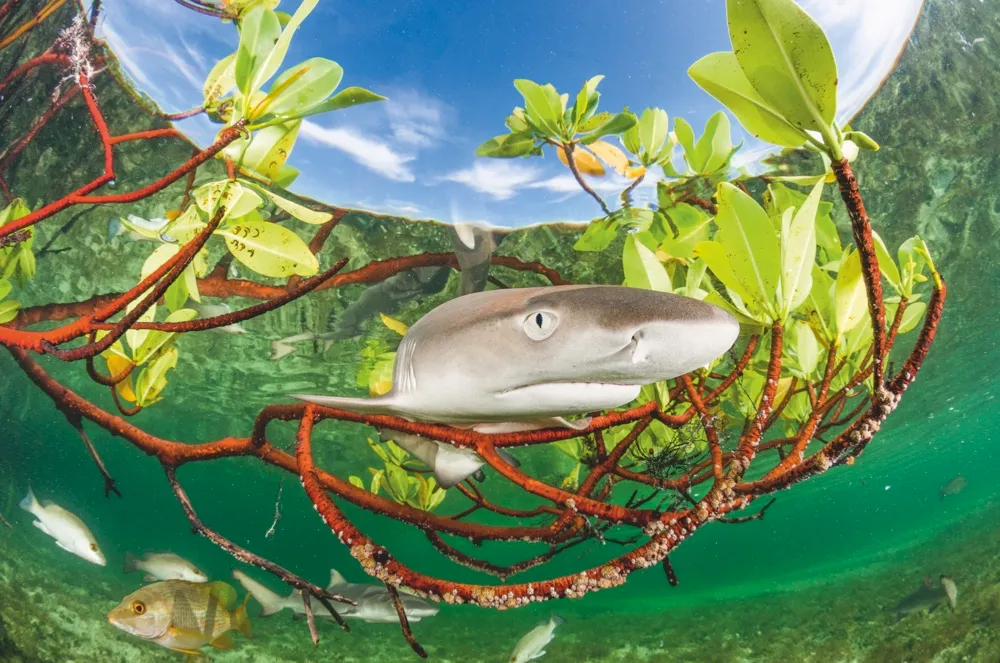
Starvation is another big threat. As newborns, lemon sharks have huge livers packed with oil. Similar to an egg’s yolk, this is how the mother provides energy for her pups to see them through the first few weeks of their lives. But the clock starts counting down as soon as they’re born, so pups need to learn how to hunt and feed themselves before they’ve used up their reserves. And they don’t always get it right first time.
“I’ve seen them biting leaves or roots a few times,” says wildlife photographer Shane Gross, who has spent many hours watching young lemon sharks in the Bahamas. The sharks soon spit out this mouthful of indigestible plant matter. “They’re definitely still learning about their environment – they’re not the top predators yet,” Gross says.
With so many troubles to deal with, lemon shark pups face a 50/50 chance of surviving their first year of life. To improve their odds of making it through this early, perilous phase, they hide among the shadowy roots and trunks of mangrove forests. At low tide, they’ll swim down a creek and out to nearby sand flats where they hunt fish and small crabs. Their skin is yellow-tinted from certain angles, which gives lemon sharks their name and provides camouflage against the sandy seabed. Usually, though, these areas are relatively safe at low tide because the water is too shallow for large predators. But as soon as the tide rises again, the young sharks retreat back into the mangrove forest.
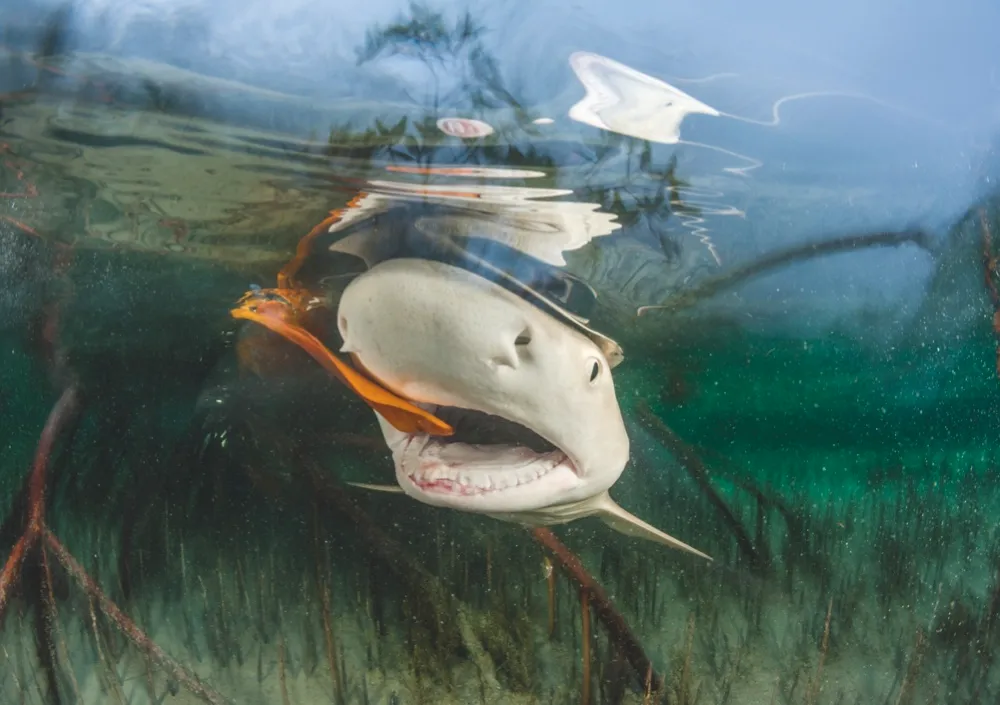
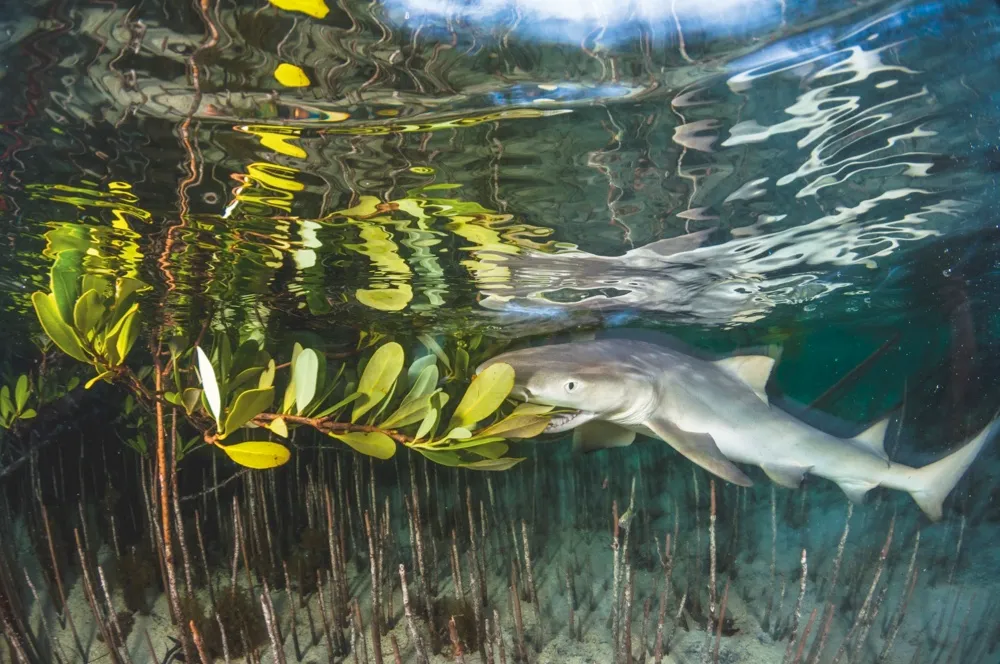
Studies at the sharklab
The lemon sharks’ preference for warm inshore waters, coupled with the fact that they can thrive in aquaria, is what makes the species ideal for study. Since 1990, scientists at the Bimini Biological Field Station in the Bahamas, colloquially known as the Bimini Sharklab, have been studying the species in considerable detail. Hundreds of students have made the pilgrimage to the facility that lies approximately 95km off the coast
of Miami to help out. And incredible discoveries have been made as a result – including that lemon sharks hang out in gangs.
For two years, on and off, members of the research team took it in turns to climb to the top of three tall towers in a mangrove inlet, armed with a pair of binoculars, to peer down into the water at free-swimming sharks that had been tagged with coloured markers. Often, the scientists saw the same two, three or more sharks swimming together; sometimes following each other, sometimes swimming in parallel and sometimes circling, head to tail. And some of the sharks stayed in the same gangs throughout the whole two years of the study.
Young sharks also make friends under controlled laboratory conditions. Given the choice, these captive sharks prefer to spend time with other sharks they’ve met previously rather than total strangers. These social networks probably form because they help sharks to learn from each other how to find food and avoid predators. It may also make life more peaceful and reduce the chances of fights breaking out.
There is even some evidence that lemon sharks can learn simple tricks from one another. Captive sharks in tanks have been seen to observe and copy the actions of other sharks that had previously been trained to access food rewards in a certain way. This is the sort of complex behaviour you might expect from primates, dogs or crows, but not sharks.
Do lemon sharks learn to recognise other individuals and know who is who? For now, we’re not sure. It could be that they simply learn to tell the difference between familiar and unfamiliar animals. Studies of these youthful gangs are adding to the growing body of evidence that not all sharks are alike – in fact, it seems as if they have individual personalities. Within a gang, some sharks assume the role of leaders and always swim at the front, while others are followers and seem content to trail along behind.
As well as sticking with sharks they know, most young lemon sharks stay in one small area of mangroves – perhaps just a few square kilometres – for the first three years of their life. They never willingly stray too far. “If you move a newborn lemon shark and take it way up the coastline and release it in a completely new area, it will swim right back to its home,” says Ian Bouyoucos, a shark biologist who studied lemon sharks at the Cape Eleuthera Institute in the Bahamas. “They’re very much attached to specific habitats,” he says.
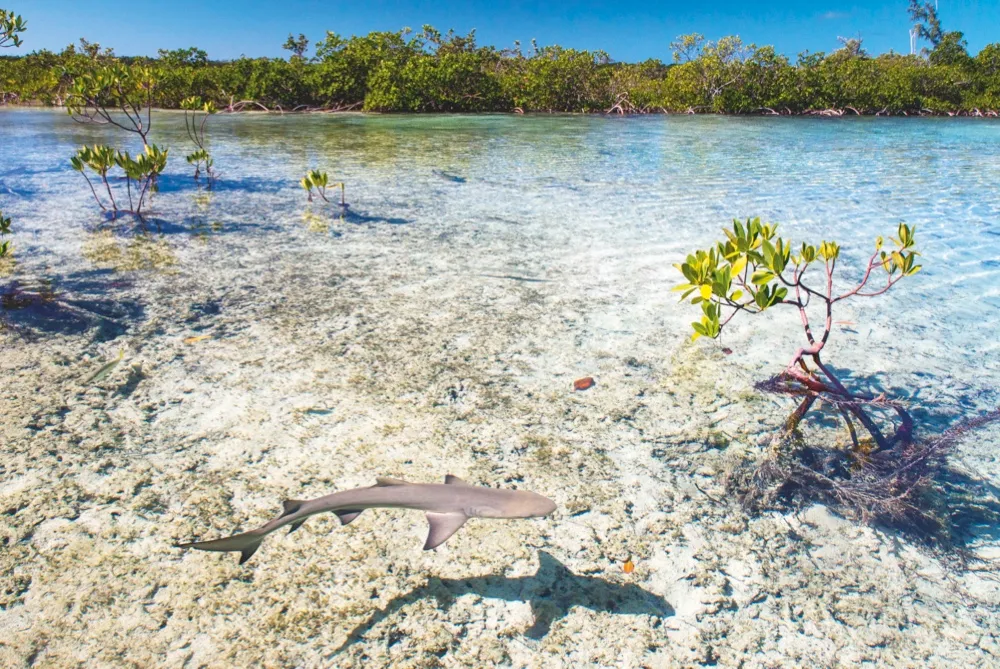
Homing sharks
An exception to these home-loving young ones are the lemon sharks that live off the south-east coast of the USA. Each winter, juvenile sharks hang out in an estuary at Cape Canaveral in Florida. Then from February to April they swim hundreds of kilometres northwards, to estuaries in Georgia and South Carolina. It’s thought they undergo these migrations to stay within their preferred temperature range: not too hot and not too cold.
Back in the Bahamas, the lemon sharks retain their homing abilities throughout their lives. As they get older they gradually expand their home range, roaming an ever larger area of the coast. Then as adults, at up to 3.4m in length, lemon sharks set off on great journeys. Fitted with satellite tags, they have been tracked thousands of kilometres. But when the time comes for females to give birth, they go right back to where they came from.
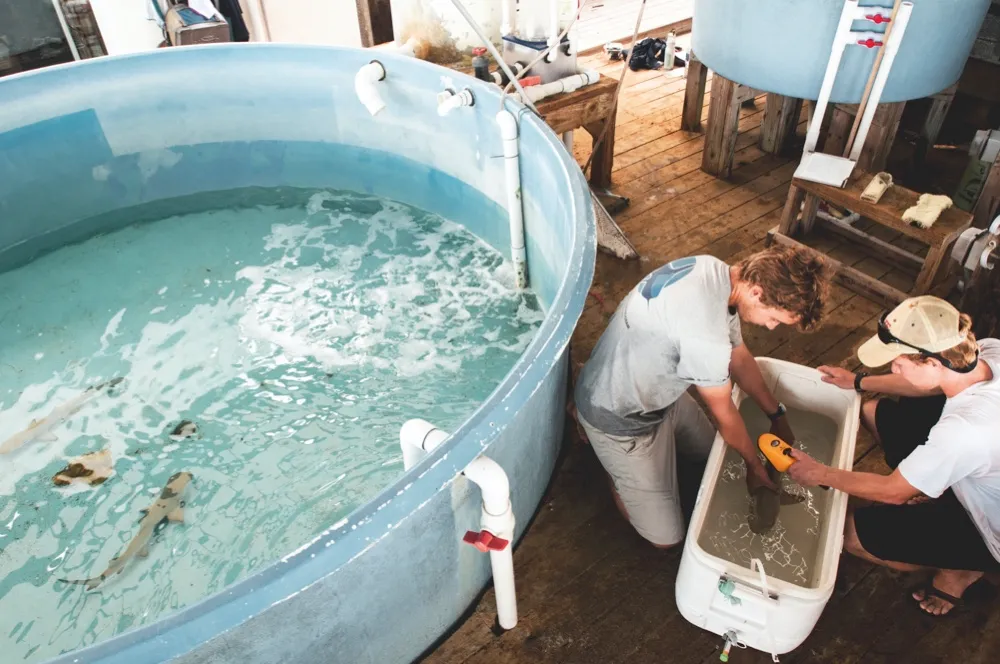
Between 1993 and 2012, scientists in Bimini caught newborn sharks in the mangroves, fitted them with tags and took tissue samples to work out the DNA fingerprint of each one. Then they let the pups go and waited patiently until some of them began to come back. Six females returned 14–17 years later to give birth to their own pups in the exact same spot where they were born. It was the first time this behaviour, known as natal philopatry, had been directly observed in any sharks.
It means that lemon sharks now join the likes of salmon and sea turtles as master ocean navigators. But exactly how they do it remains something of a mystery. It’s possible they imprint on the specific pattern of Earth’s magnetic field at their nursery area, then use some kind of natural, built-in compass to find their way back. Like all sharks, lemon sharks have electroreceptors called ampullae of Lorenzini dotted, like dimples, all over their snouts and along their flanks. As well as detecting weak electric fields from the twitching muscles of their prey, this may also let sharks sense geomagnetic fields.
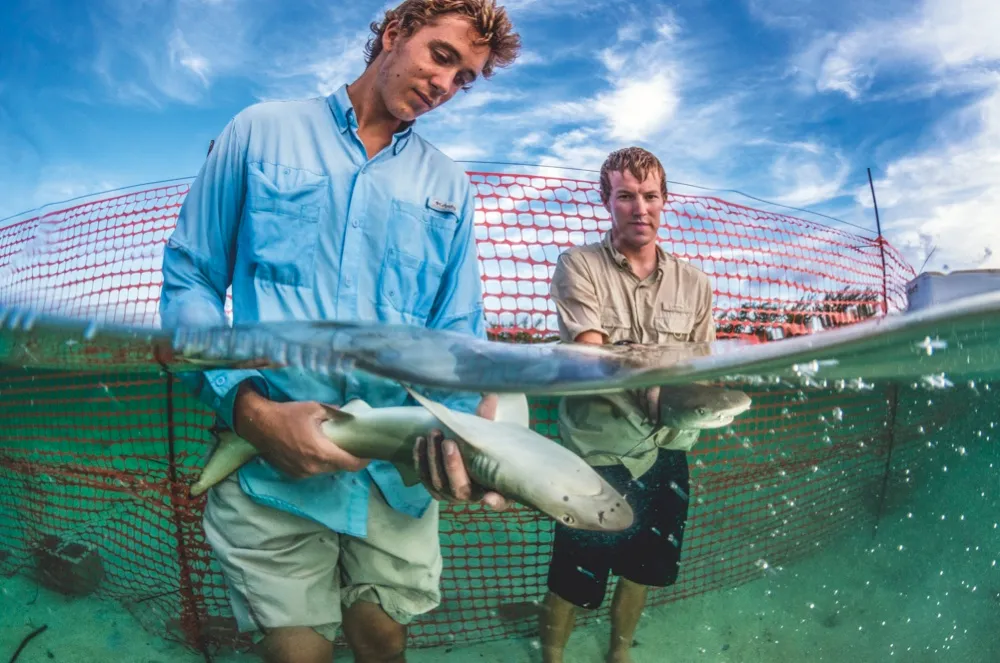
Slow to grow
Female lemon sharks only give birth every other year, producing between four and 18 pups at a time. Their slow growth rate and late sexual maturity at 11–13 years or even older, means these sharks are prone to overfishing. Compare this to fast-growing bony fish species such as herring and anchovies, which have more of a scatter-gun approach to reproduction, taking only a year or so to reach full sexual maturity, and spraying millions of eggs in to the sea.
These characteristics mean herring and anchovy populations are able to recover from overfishing relatively quickly. Sharks, on the other hand – especially lemon sharks – can take decades to replenish their numbers. As lemon sharks have been heavily fished throughout their range, it’s perhaps no surprise that they’re categorised as Near-Threatened (one step below Vulnerable on the endangerment scale).
Another concern is the lemon sharks’ dependence on mangrove forests. Globally, these ecosystems are coming under immense pressure. Huge stretches of mangrove have already been cut down to create ponds for shrimp farming and coastal developments such as marinas and resorts – a big worry on the island of Bimini in the Bahamas. “There’s a resort that wants to turn the mangroves into a playground, instead of leaving them as fantastic larders for all sorts of different species,” says Samuel ‘Doc’ Gruber, founder of the Bimini Sharklab. “The mangroves are important for far more than just young lemon sharks,” he says. “As nurseries for fish, they’re the key to coral reef biodiversity.”
Mangrove forests are bustling, biodiverse ecosystems packed with a broad spectrum of species, including the young of many fish and invertebrates that are important in local fisheries, such as snappers and lobsters. Gruber is optimistic, though, that a proposed marine protected area will finally be set up in Bimini to safeguard these vital mangroves and everything that relies on them.
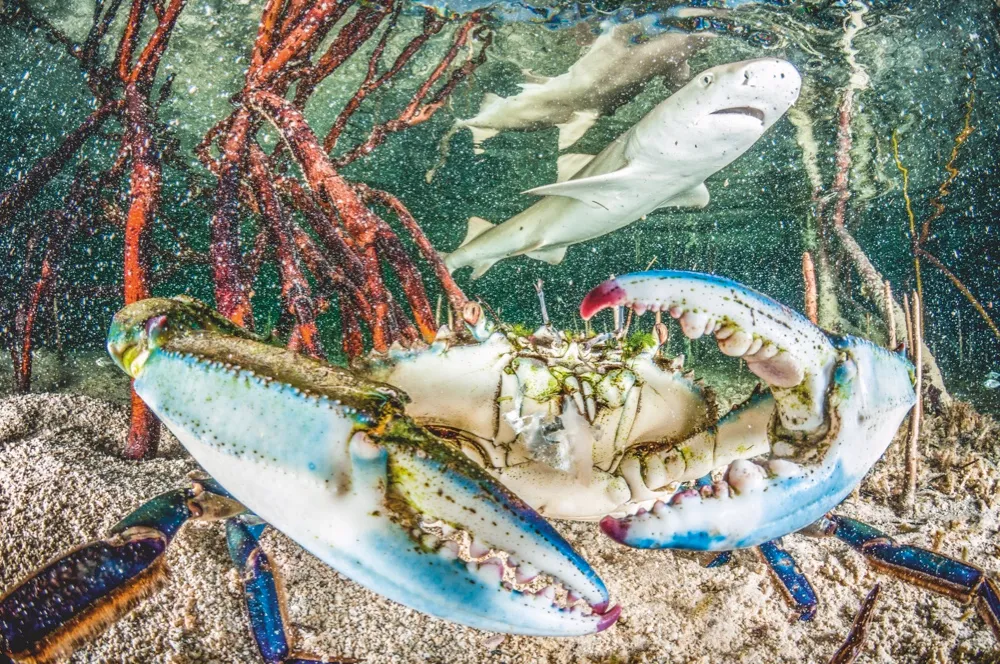
Climate change is another threat that looms over the lemon sharks, although at the moment no one really knows how bad it will be for them. As shark biologist Ian Bouyoucos points out, studies of the effects of climate change on sharks lag far behind those looking at bony fish. The reason for this generally comes down to the difficulty of working with often very big, free-ranging shark species.
Rising sea temperatures are likely to be a big problem. “Sharks, for the most part, don’t regulate their body temperature,” explains Bouyoucos. “So the higher the water temperature, the higher the shark’s metabolic rate.” And with their metabolic rates running faster, sharks will burn more energy just to exist. This might mean that other sources of stress, such as a lack of food, could easily push them over the edge.
For now, though, we know very little about how sharks – even well-studied ones such as lemon sharks – will respond as the oceans grow warmer and more acidic. “How will climate change impact on these wonderful fish, and how might it affect their distribution and abundance?” Bouyoucos wonders out loud. “It’s a big, open-ended question.”
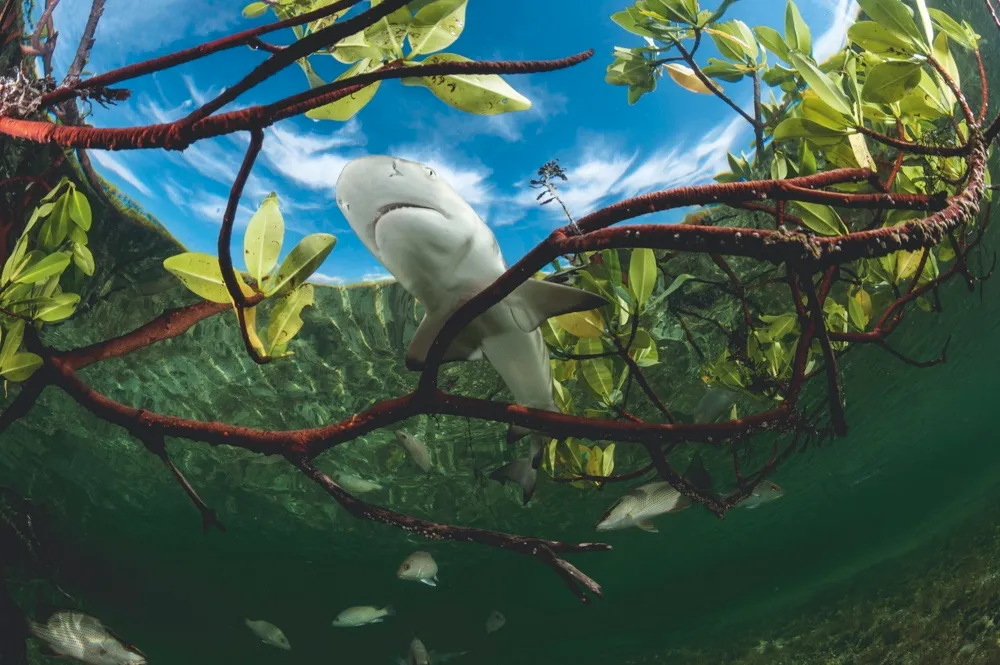
Helen Scales is a marine biologist, author and BBC radio presenter. Her latest book Eye of the Shoal (Bloomsbury Sigma, £16.99) is out now.
